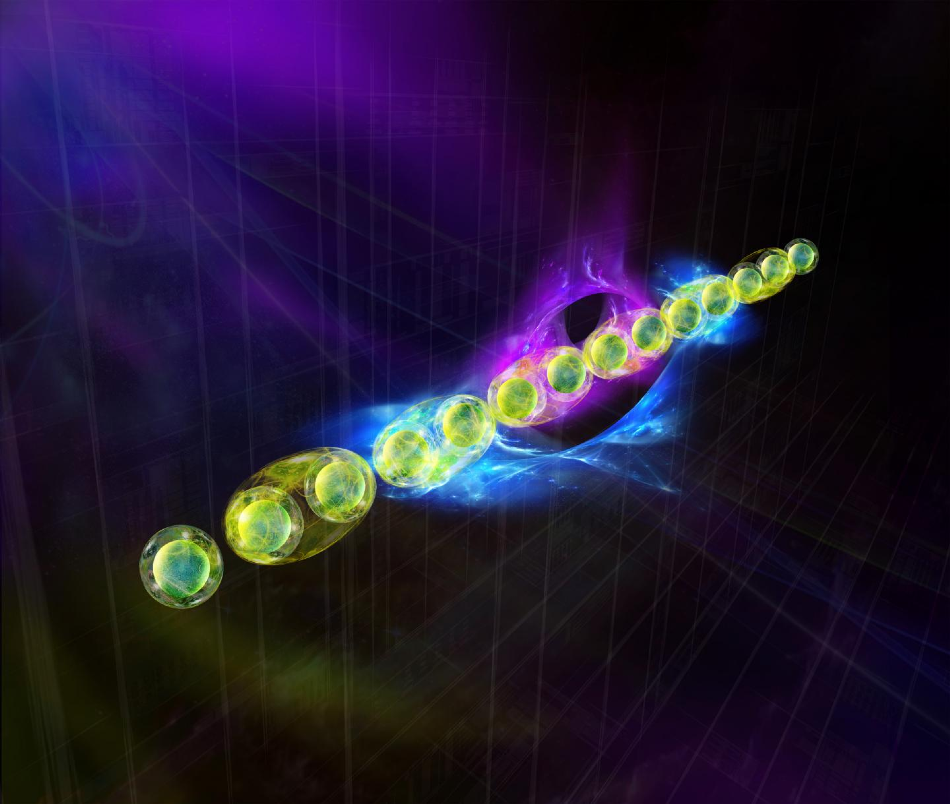Apr 13 2020
Existing sophisticated quantum simulators provide extensive opportunities to create and analyze complex quantum states. They are achieved with Rydberg atoms, ultracold atoms in optical lattices, superconducting quantum bits, or trapped ions.
 A particularly fascinating class of quantum states is topological states of matter. Image Credit: IQOQI Innsbruck/Harald Ritsch.
A particularly fascinating class of quantum states is topological states of matter. Image Credit: IQOQI Innsbruck/Harald Ritsch.
Topological states of matter are a specifically attractive class of quantum states. David Thouless, Duncan Haldane, and Michael Kosterlitz received the 2016 Nobel Prize in Physics for their theoretical discovery in this field. These states of matter feature nonlocal quantum correlations and are specifically resistant to local distortions that occur inevitably during experiments.
Identifying and characterizing such topological phases in experiments is a great challenge. Topological phases cannot be identified by local measurements because of their special properties. We are therefore developing new measurement protocols that will enable experimental physicists to characterize these states in the laboratory."
Benoît Vermersch, Jinlong Yu, and Andreas Elben, Center for Quantum Physics, University of Innsbruck
The researchers are also affiliated to the Institute for Quantum Optics and Quantum Information of the Austrian Academy of Sciences.
Scientists recently achieved this for non-interacting systems. But, until now, this has not been feasible in the case of interacting systems, which could also be employed as topological quantum computers in the future.
With Random Measurements to a Definite Result
The physicists in Peter Zoller’s research group have now put forward measurement protocols that allow the so-called topological invariants to be measured. The protocols have been described in Science Advances.
These mathematical expressions characterize the common properties of topological spaces and enable thorough identification of the interacting topological states with global symmetry in one-dimensional, bosonic systems.
The idea of our method is to first prepare such a topological state in a quantum simulator. Now so-called random measurements are performed, and topological invariants are extracted from statistical correlations of these random measurements."
Andreas Elben, Center for Quantum Physics, University of Innsbruck
The unique aspect of this technique is that despite the topological invariants being highly complex, non-local correlation functions, it is still possible to extract them from statistical correlations of simple, local random measurements.
Similar to a technique recently proposed by the research group to compare quantum states in simulators or computers, random measurements such as those are feasible in current experiments today.
Our protocols for measuring the topological invariants can therefore be directly applied in the existing experimental platforms."
Benoît Vermersch, Center for Quantum Physics, University of Innsbruck
The measurement technique was created by Andreas Elben, Jinlong Yu, Peter Zoller, and Benoit Vermersch from Innsbruck in close collaboration with Guanyu Zhu from the Joint Quantum Institute, Maryland, USA and IBM Research, and Mohammad Hafezi (JQI Maryland) and Frank Pollmann from the Technical University of Munich.
The study was funded by the European Research Council and the EU flagship for quantum technologies, among others.